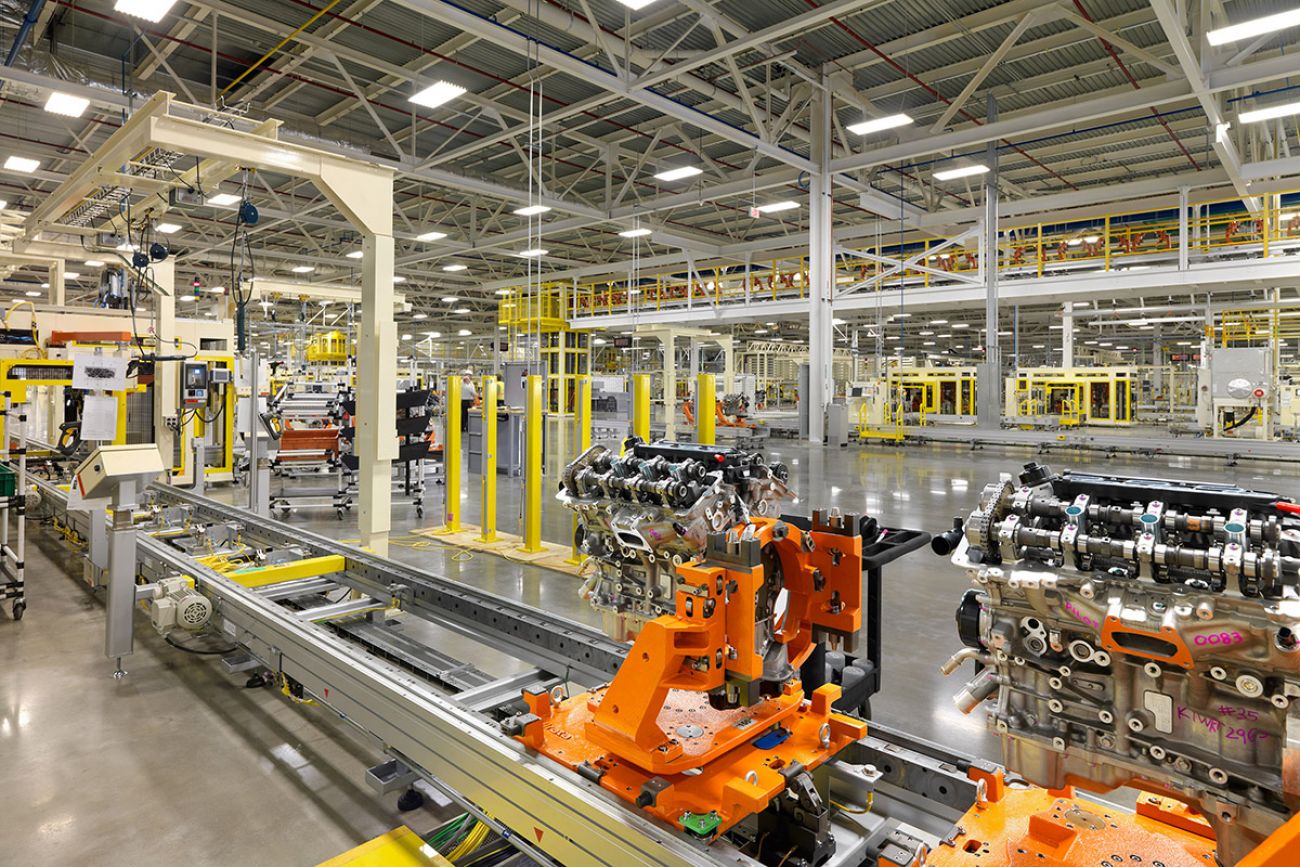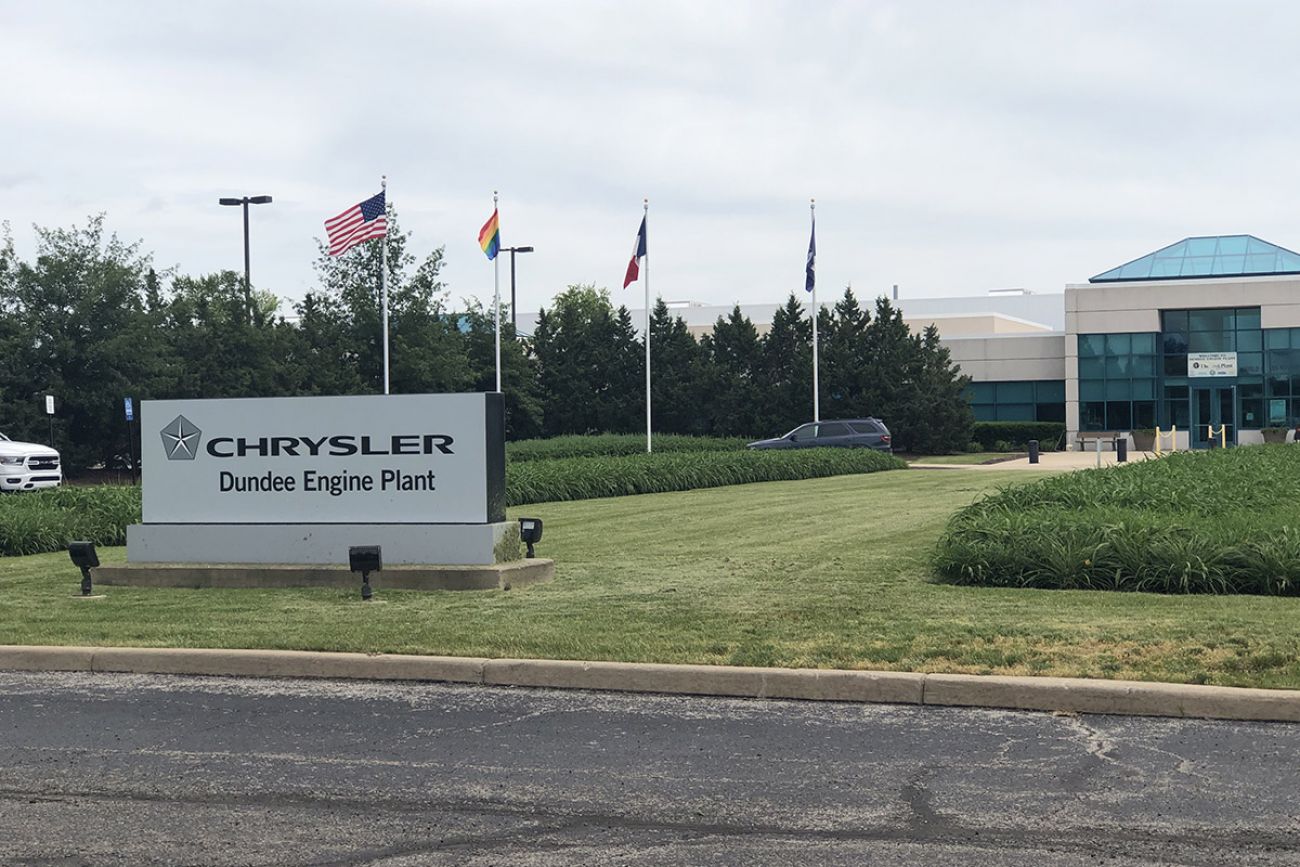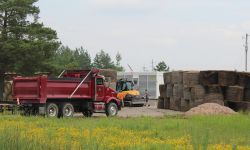Dundee lost out on a $2.5B battery plant, but factory town finds lessons

DUNDEE — Months of Zoom calls and work weekends spent trying to figure out how to bring a $2.5-billion Stellantis electric vehicle investment to Dundee — a village midway between Ann Arbor and Toledo — looked like it would pay off earlier this year.
Michigan had a new $1 billion incentive fund to entice such investments. And it wasn’t hard to sell fast-growing Dundee, which sits along US-23 and can pull workers from all over southern Michigan and northern Ohio.
Even more promising: Stellantis — the European parent company of Chrysler — already operates a factory here with excess property. It wasn’t enough to handle the 3.2-million square feet needed for the EV project, but plenty more land was available around it.
Related: Stellantis chooses Indiana over Michigan for EV battery factory
All of which allowed this historic village of about 4,400 to make a solid case for snaring the plant. “Dundee,” said Tim Lake, president and CEO of the Monroe County Business Development Corp., “came back into focus.”

But in May, the village and surrounding township learned that Stellantis — the area’s largest employer — had bypassed Dundee. Instead, the company turned to Kokomo, Indiana, to build the battery plant.
For Michigan, the loss is about more than new jobs and investment in a small town 20 minutes north of the Ohio border. Stellantis’ decision is a reminder that Dundee — and, eventually, places like Dearborn, Flint, Romulus and Bay City — carry a specific vulnerability as auto manufacturers shift to electric vehicle production.
They are all home to factories producing gasoline-powered engines and parts for them.
And so, as billion-dollar deals take shape for EV batteries — effectively, the new “engines” of the next-generation of automotive production — questions remain about what’s next for factories like the one in Dundee that still crank out internal combustion engines (ICE). Those questions extend to their host communities, with a combined 7,000 workers, and their supplier bases.
“As internal combustion engines slowly dissipate, and electric vehicles slowly grow, there has to be an impact,” said Glenn Stevens, executive director of MICHAuto, an organization focused on retaining Michigan’s auto industry. “The question is, what are you doing to be prepared for the transition?”
It’s a question that’s top of mind for U.S. Rep. Debbie Dingell, a Democrat from Ann Arbor, who said she regularly speaks with state officials about Michigan’s competitiveness in attracting new EV facilities.
She also talks regularly with United Auto Workers members, who she said express concern about their futures if they work in plants without recent new investment or high-sales products.
“We have to go about getting these new plants built here,” she said. “Michigan wants to stay at the forefront of innovation and technology. We have to be in the game.”
Dundee and Monroe County now get that, too, Lake said.
Among the lessons learned from the Stellantis disappointment this year: “The reality struck that this EV thing’s for real. And it’s coming whether we want it to or not,” he said.
“So what’s the life expectancy of our plant?”
‘We are booming’
Signs of growth can be found all over Dundee, which straddles U.S.-23, with the historic village anchoring one side and Michigan’s first Cabela’s store dominating the other.
Five new apartment buildings are planned on eight recently purchased acres. There’s a $14 million expansion of an LED light factory, which promises to bring nearly 200 new jobs. An overcrowded school district hopes voters soon approve funding for 10 new elementary classrooms.
“We are booming,” said Village Manager David Uhl.
The start of the growth could be traced to Cabela’s, the massive sporting goods store lauded as Michigan’s largest tourist attraction for years after it opened in the 1990s.
More recently, it’s the engine plant, announced in 2003, that drove commercial and residential growth. Founded as part of what was known as the Global Engine Manufacturing Alliance, a collaboration among what was then Daimler Chrysler, Mitsubishi and Hyundai, it’s now known as the Chrysler Dundee Engine Plant.
The factory survived multiple iterations of corporate ownership changes of the Chrysler brand, growing from a few hundred employees to 995 workers, according to Stellantis. Among them, 848 are hourly and 147 salaried.
The 1.3-million-square-foot facility of offices and manufacturing space is located on 275 acres north of the village, where workers make the 2.4-liter I-4 Tigershark Engine for the Jeep Compass and the 3.6-liter V-6 Pentastar Upgrade for the newest Jeep Grand Cherokee and Grand Cherokee L.
Some of the production and job gains came as Stellanti remade its Mack Avenue Plant in Detroit into an assembly center three years ago, moving engine production to Dundee amid a $119 million investment.
That move, in 2019, marks the most recent corporate investment announced in the plant, according to the company, which told Bridge Michigan it won't disclose any future plans for the Dundee plant or its production capacity.
So far, the future of the plant isn’t driving curiosity or concern among residents, Uhl said.
“I’m not sure people are even thinking about that,” he said.
But community leaders’ concern rose after the Kokomo announcement. A $4 billion battery facility will be built in Windsor, Ontario.
Kokomo, southwest of Fort Wayne, is also home to an engine plant, which opened in the last year after a $400 million conversion of a closed transmission factory. The new development will use adjacent property the company already owns, creating a campus.
The issue picked up urgency this month when Stellantis said it’s consolidating production in the two-building Trenton Engine plant, which, like Dundee, makes the V-6 engine for the new Cherokees.
Changes in Trenton, located southwest of Detroit about 30 miles from Dundee, call for engine production only in its south building, while the north building will be converted into a warehouse and space for non-manufacturing company needs. A Stellantis spokesperson declined to say whether the number of engines made in Trenton will be reduced as the complex’s production footprint changes.
Many of the 1,300 workers in Trenton had been worried about job losses, Dingell said, but with the plans solidified, they learned that anyone displaced by the engine move should get a job offer elsewhere in the company.
“The news related to the Trenton Engine Plant is certainly, in my opinion, the forerunner of what will happen in Dundee,” Lake, of the Monroe business group, told Bridge.
“As the manufacturers move from ICE (internal-combustion engines) to EV propulsion, they will be slowly decommissioning ICE plants,” he said.
The shifts have increased the urgency among Monroe County officials to retain automotive jobs, something officials hope to work on with Stellantis.
“Hopefully … we could encourage repurposing into another manufacturing opportunity,” Lake said.
Industry changes
Electric vehicles represent about 4 percent of U.S. auto sales, but today’s 670,000 units are expected to grow to 2.5 million — almost a four-fold increase — by 2027. Market share could reach 68 percent by 2035, and automakers are adapting their product lines and production facilities to accelerate that.
Across the industry, EV manufacturing is taking shape as announcements flow with news about large-scale battery manufacturing sites.
The needs of a battery plant are changing what makes a good site, and most older manufacturing plants are not good candidates for them, said Mark Burton, an attorney at the Detroit-based Honigman law firm and CEO of the Michigan Economic Development Corporation from 2020 to early 2021.
New sites must be bigger than traditional engine factories to accommodate massive production numbers and side operations, such as recycling. They require access to massive amounts of electricity and need to be near auto assembly operations due to complexity in transporting batteries.
They also have to be ready for immediate development, since the industry’s race for EV market share sets a compressed time frame.
It’s critical that Michigan understands the importance of large tracts of land to attract new plants, Burton said. It received funding to do that when the state approved the $1 billion, bipartisan Strategic Outreach and Attraction Reserve fund, with money for both large-project incentives and site preparation that Dundee had thought could help its factory land the Stellantis project.
Other states are ahead of Michigan in lining up development land, Burton said, a situation underscored to state officials after Ford Motor Co. spurned Michigan last fall by choosing Kentucky and Tennessee for new battery campuses.
“Speed is so critical right now,” Burton said. Options in the state “don’t always allow for urgency to meet the company’s needs.”
In many cases, automakers are still defining their needs, by evaluating all of their operations and setting production priorities, said Stevens of MICHAuto. Some of those decisions are also influenced by labor issues, consumer demand and regulatory changes.
In some cases, ICE vehicle manufacturing facilities have been flagged for more investment and not downsizing. Ford is spending $2 billion on improvements that will boost jobs at its Dearborn engine plant and the Michigan Assembly Plant in Wayne, among others.
Ford also announced in 2019 it would decommission its Depression-era Romeo engine plant, something that was to take place at the end of this year, but has been extended into 2023, said Vicky Rowinski, Director of Macomb County Planning & Economic Development.
Unclear is how Ford’s subsequent EV expansions may have been tied to that, Rowinski said.
But what the Romeo community is learning about how to best reposition a closed factory can also guide places like Dundee, Rowinski said. Romeo community and business leaders continue to meet every other month.
“We’re looking at this more of a regional asset, versus something just being in the rural part of Macomb County,” she said.
The goal, she said, is to come up with a shovel-ready option once Ford lists the property for sale “so that it’s ready to go once Ford makes that decision.”
Moving forward
Monroe County and Dundee hope to have similar conversations soon, Lake said. Local leaders hope to retain the engine plant and point to Stellantis’ community support for events like the recent Mayfly Festival to show that the company also values being there.
The lessons learned from losing out to Kokomo will be a foundation for those talks, Lake said.
While Dundee didn’t win the battery plant, Lake said it’s possible the existing property and the relationships formed in the process could jumpstart the automaker’s next round of investment in Monroe County.
That worked in Michigan’s favor in other automaker decisions, including when General Motors turned to Lake Orion and the Lansing area for its $7 billion investment in EV production earlier this year.
Economic developers recognized, too, that open land in the Dundee area, much of it now agricultural, positions it well for companies looking to build. Lake estimates up to 1,000 contiguous acres could be assembled, making that among the larger open development tracts in the state.

The properties may not “be a perfect rectangle,” Lake said, but they abut agricultural land and would not disrupt residential areas, while still close to major transportation arteries.
The Kokomo loss has also helped Dundee realize that landing a new, large-scale development will require new water lines from the city of Monroe. Monroe County also needs to keep working with automotive suppliers to ensure “they’re staying healthy and staying on top of industry trends,” Lake said.
Engine plants are not the only facilities vulnerable to change. Michigan’s 12 assembly factories also drive Michigan’s manufacturing base. But, Stevens said, the state is learning along with local officials, like those in Dundee and Romeo, how to best anticipate shifts and find opportunities.
If they don’t, Stevens said, “they might be in for a rude awakening as things develop. And that's just not something we want to see.”
Business Watch
Covering the intersection of business and policy, and informing Michigan employers and workers on the long road back from coronavirus.
- About Business Watch
- Subscribe
- Share tips and questions with Bridge Business Editor Paula Gardner
Thanks to our Business Watch sponsors.
Support Bridge's nonprofit civic journalism. Donate today.
See what new members are saying about why they donated to Bridge Michigan:
- “In order for this information to be accurate and unbiased it must be underwritten by its readers, not by special interests.” - Larry S.
- “Not many other media sources report on the topics Bridge does.” - Susan B.
- “Your journalism is outstanding and rare these days.” - Mark S.
If you want to ensure the future of nonpartisan, nonprofit Michigan journalism, please become a member today. You, too, will be asked why you donated and maybe we'll feature your quote next time!




